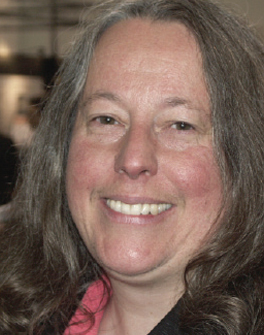Implementing CALM Rules During Audio Editing

Mary C. Gruszka
Putting systems and operations in place to ensure compliance with the CALM Act involves having a plan; understanding your workflows; installing the necessary loudness meters that implement the algorithm specified by ITUR BS.1770; developing operational procedures; and following the “golden rule” for the ATSC transmission system—average loudness must equal the dialnorm metadata value that you transmit.
In this column we’re going to tie up some loose ends.
Previously we covered operational procedures for live sound mixing, with examples from NBCUniversal. Let’s continue now with a few words about post production and ingest.
MONITORING LEVELS
At NBCU, post-production editors isolate dialog on their timelines and set the fader on the edit console so that normal spoken dialog reads –24 LKFS.
“For news, this is done during interviews or voice-overs,” said Jim Starzynski, director and principal audio engineer for NBCUniversal Advanced Engineering, and chairperson of the Advanced Television Systems Committee (ATSC) technical subgroup S6-3 on digital television loudness. “Intros are not typically used as talent tends to project abnormally louder during these elements.”
Once the –24 LKFS anchor loudness is achieved, the monitoring level control is set and not changed for the duration of the project.
The professional video industry's #1 source for news, trends and product and tech information. Sign up below.

“The editor now sets the remaining dialog and establishes the ratio between dialog, music and effects by ear,” Starzynski said. “At this point, the loudness meter is used as a reference to confirm what the editor is hearing. This is a simple practice that’s easy to accomplish, and that yields excellent results by leveraging the best judge of audio loudness, the human hearing system.”
For ingest, NBCU follows procedures outlined in the ATSC A/85 recommendations for checking commercial and promo content for loudness. Namely, an average reading is taken of all elements of the content, not just the dialog, for the entire duration of the content.
“This is done by synchronizing the resetstart- pause of a loudness meter running in infinite mode, with the pause-play-pause of the whole spot,” Starzynski said. “The meter and the content run simultaneously, and when the meter is paused at the end of the spot, the resultant numeric value is the precise average loudness of that piece of content.”
As discussed previously, reference monitoring levels are determined by the size of the audio control or editing room, with smaller rooms operating at a lower level. The ATSC A/85 PDF document provides links to audio test signals, which can be used to set up reference levels per the given instructions. I was able to play the signals on my computer, but wasn’t able to download the actual files to save them for later use.
REFERENCE MONITORING LEVELS
If you experience the same problem, here is the direct link to an HTML page with links to the individual files: www.atsc.org/refs/a85. (Thanks to Jim Starzynski for helping to obtain this information.)

Jim Starzynski, director and principal audio engineer for NBCUniversal Advanced Engineering, and chairperson of the Advanced Television Systems Committee technical subgroup S6-3 on digital television loudness. The files are: a 440 Hz sine wave tone at –20 dB FS recorded on the left channel of a stereo file; 500 Hz to 2 kHz band limited pink noise at –20 dB FS recorded on the left channel of a stereo file; a speech recording, first of a male speaker, then a female, that has been adjusted in level so that it measures –24 LKFS per the ITU-R BS.1770 standard; and the final test signal, low-frequency pink noise.
In live sound mixing and post-production editing, the audio mixers are expected to be the best judge of loudness, while creatively developing their mix to take advantage of the dynamic range available to digital television. That means that the acoustics of their mixing rooms shouldn’t interfere with that process.
If 5.1 wasn’t enough of an incentive to evaluate and perhaps update the acoustics and monitoring loudspeaker systems of your audio control and edit rooms, then perhaps the CALM Act will provide the big push.
LEARNING CURVE
It’s hoped that these articles about developing systems to implement the CALM Act have proved useful. The examples cited from the experiences at NBCUniversal should show that setting up procedures and practices for measuring and monitoring loudness are fairly straightforward.
Sure it will take some time to develop your own strategies as you work through the processes, and, like anything new, learning to read loudness will take some training and practice. But as NBCU discovered, the learning curve was not a steep one.
And, as ITU-R BS.1770 is an international standard, mixing to audio levels based on loudness should now track across borders much more easily. No more guessing how zero VU translates to a particular PPM reading.
Establishing and sticking to your company’s standard loudness target value, and setting dialnorm to that value on your AC-3 encoder, should ultimately reduce, and hopefully eliminate, viewers’ complaints about wide variations in loudness; keep you in compliance with the CALM Act; and achieve some of the objectives of the AC-3 system.
As the ATSC A/85 document states, the AC-3 system is “intended to provide: 1) a consistent dialog loudness between programs, and 2) to allow individual listeners to reduce the dynamic range excursions around this common loudness level if they so desire.”
Good luck in your endeavors.
Mary C. Gruszka is a systems design engineer, project manager, consultant and writer based in the New York metro area. She can be reached via TV Technology.
